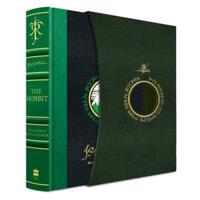Publisher's Synopsis
The Vicar of Bullhampton is an 1870 novel by Anthony Trollope. It is made up of three intertwining subplots: the courtship of a young woman by two suitors; a feud between the titular Broad church vicar and a Low church nobleman, abetted by a Methodist minister; and the vicar's attempt to rehabilitate a young woman who has gone astray. Trollope expected his depiction of a fallen woman to be controversial, and unusually for him wrote a preface defending it. But the anticipated controversy never materialised, and contemporary reviewers tended to ignore that subplot, focussing instead on the courtship in the novel. Reviews were generally less than positive; many reviewers and readers who had acquired a taste for Trollope from the 1850s-60s Barchester novels were unhappy about the darker tone of later novels such as this one. Trollope's fortunes suffered because of the mode of the novel's publication. Owing to mismanagement by the publishers, it was not serialised in a popular magazine, as originally intended. Instead, it was issued as monthly numbers, a form of serialisation that had become unpopular with the reading public, and Trollope lost readers as a result.The Vicar of Bullhampton is set in a small town in Wiltshire. It develops three subplots, all connected with Frank Fenwick, the eponymous vicar.The first subplot involves the courtship of Mary Lowther, a childhood friend of the vicar's wife. Harry Gilmore, a Bullhampton squire and a friend of the Fenwicks, falls deeply in love with her. Mary recognises that Gilmore is a good man, but she fears that she does not adore him as a woman should adore the man she marries. The Fenwicks and her guardian aunt all urge her to accept his proposal, telling her that the affection she does not now feel will come after marriage. In the face of this advice, she does not reject Gilmore outright, but asks for time to consider. Mary finds the love she seeks in her second cousin, Captain Walter Marrable. He falls in love with her, and she joyously accepts his offer of marriage. However, misfortune strikes in the form of Colonel Marrable, the Captain's father, who swindles his son out of the fortune left him by his late mother. The impoverished Captain fears that he will have to return to India with his regiment; he and Mary, each unwilling to inflict poverty on the other, end their engagement by mutual consent and with mutual regret. Mary, disspirited, yields to Gilmore's importunements, warning him that theirs must be a long engagement and that she will end it if Captain Marrable finds himself able to marry a woman without a fortune. This comes to pass: the death of the Captain's cousin, the heir to the family's baronetcy, makes him the likely eventual heir. The current Baronet accepts the Captain as his heir, buying out the Colonel's interest to prevent his squandering the family fortune. The two lovers are reunited, leaving Gilmore bitter and despondent.According to Trollope, the plight of Carry Brattle was at the center of the story. "The Vicar of Bullhampton was written chiefly with the object of exciting not only pity but sympathy for fallen woman, and of raising a feeling of forgiveness for such in the minds of other women."In the Autobiography, he argued that the punishment for fornication is far heavier for women than for men, although in most cases the latter are more to blame than the former; and that women are given no opportunity of returning to decent lives, however repentant they might be.....








